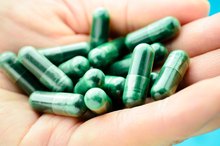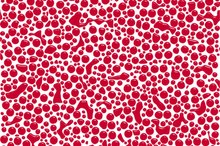Why Does Your pH Level Drop When You Exercise?
If you've ever exercised, you have experienced a drop in your body's pH level whether you realized it or not. There are two main factors that can lead to a drop in your pH: lactic acid production and increased carbon dioxide levels. Regular workouts can help improve your body's ability to handle the sources of reduced pH.
Understanding pH
The pH scale is a measurement of the concentration of hydrogen ions within a substance. It ranges from zero to 14, with seven in the middle as neutral. The lower the pH of a substance, the more acidic it is. The higher the pH, the more basic it is. At 7.4, the normal pH of your blood is relatively neutral..
- The pH scale is a measurement of the concentration of hydrogen ions within a substance.
- The lower the pH of a substance, the more acidic it is.
Effects of Exercise
Decrease in pH of Blood Caused by Exercise
Learn More
When you exercise, your muscle cells are hard at work. During sustained work, the energy-producing mitochondria inside your cells are able to produce as much energy as your muscles need using the oxygen-based pathway of metabolism. However, if there reaches a point when your cells cannot keep up with the demand, such as an increase in intensity, your body switches over to a system of energy production done without the use of oxygen. A byproduct of this metabolism is lactic acid. Another situation occurs when there is an increased use of oxygen. As blood flows through your muscles, carbon dioxide is exchanged for oxygen. An elevated heart rate from exercise hinders the release of carbon dioxide through the lungs, note Rachel Casiday and Regina Frey of Washington University's Department of Chemistry. An accumulation of carbon dioxide in the blood also affects your pH.
- When you exercise, your muscle cells are hard at work.
- During sustained work, the energy-producing mitochondria inside your cells are able to produce as much energy as your muscles need using the oxygen-based pathway of metabolism.
Fatigue and pH
You don't need a blood test to know when your pH level of your blood has dropped. A decreasing blood pH can lead to fatigue and be a limiting factor for exercise intensity and endurance. The accumulation of lactic acid inside your blood and muscles can cause pain and fatigue, notes University of Maryland kinesiology professor Stephen M. Roth. Increased amounts of carbon dioxide in your blood increase your respiratory rate, which also can induce fatigue.
- You don't need a blood test to know when your pH level of your blood has dropped.
- A decreasing blood pH can lead to fatigue and be a limiting factor for exercise intensity and endurance.
Chronic Adaptations
What Happens to the Blood Oxygen Level When a Human Exercises?
Learn More
Regular exercise can improve your body's ability to maintain a balanced pH. Adaptations to exercise include the ability to exercise at a higher intensity while using aerobic metabolism for energy production as well as the ability to better handle lactic acid produced. The first mechanism allows for a reduction in the amount of carbon dioxide pumped into the blood. As for lactic acid, your body becomes able to shuttle the substance into the mitochondria, where it can be used for energy production. This mechanism reduces the amount of lactic acid released into the bloodstream.
- Regular exercise can improve your body's ability to maintain a balanced pH.
- Adaptations to exercise include the ability to exercise at a higher intensity while using aerobic metabolism for energy production as well as the ability to better handle lactic acid produced.
- As for lactic acid, your body becomes able to shuttle the substance into the mitochondria, where it can be used for energy production.
Related Articles
References
- Washington University: pH Buffers in the Blood; Rachel Casiday and Regina Frey Department of Chemistry; September 2008
- "Exercise Physiology"; George A. Brooks, Thomas D. Fahey, Kenneth M. Baldwin; 2005
- Scientific American: Why Does Lactic Acid Build Up in Muscles?; January 2006
- Castro D, Keenaghan M. Arterial Blood Gas. InStatPearls [Internet]. StatPearls Publishing. Updated February 1, 2019.
- Abdo WF, Heunks LM. Oxygen-induced hypercapnia in COPD: myths and facts. Crit Care. 2012;16(5):323. doi:10.1186/cc11475
- Cukic V. The changes of arterial blood gases in COPD during four-year period. Med Arch. 2014;68(1):14–18. doi:10.5455/medarh.2014.68.14-18
- Sood P, Paul G, Puri S. Interpretation of arterial blood gas. Indian J Crit Care Med. 2010;14(2):57–64. doi:10.4103/0972-5229.68215
Writer Bio
Laura Niedziocha began her writing career in 2007. She has contributed material to the Stoneking Physical Therapy and Wellness Center in Lambertville, N.J., and her work has appeared in various online publications. Niedziocha graduated from Temple University with a Bachelor of Science in exercise science. She also has her Associate of Arts in communications from the Community College of Philadelphia.









